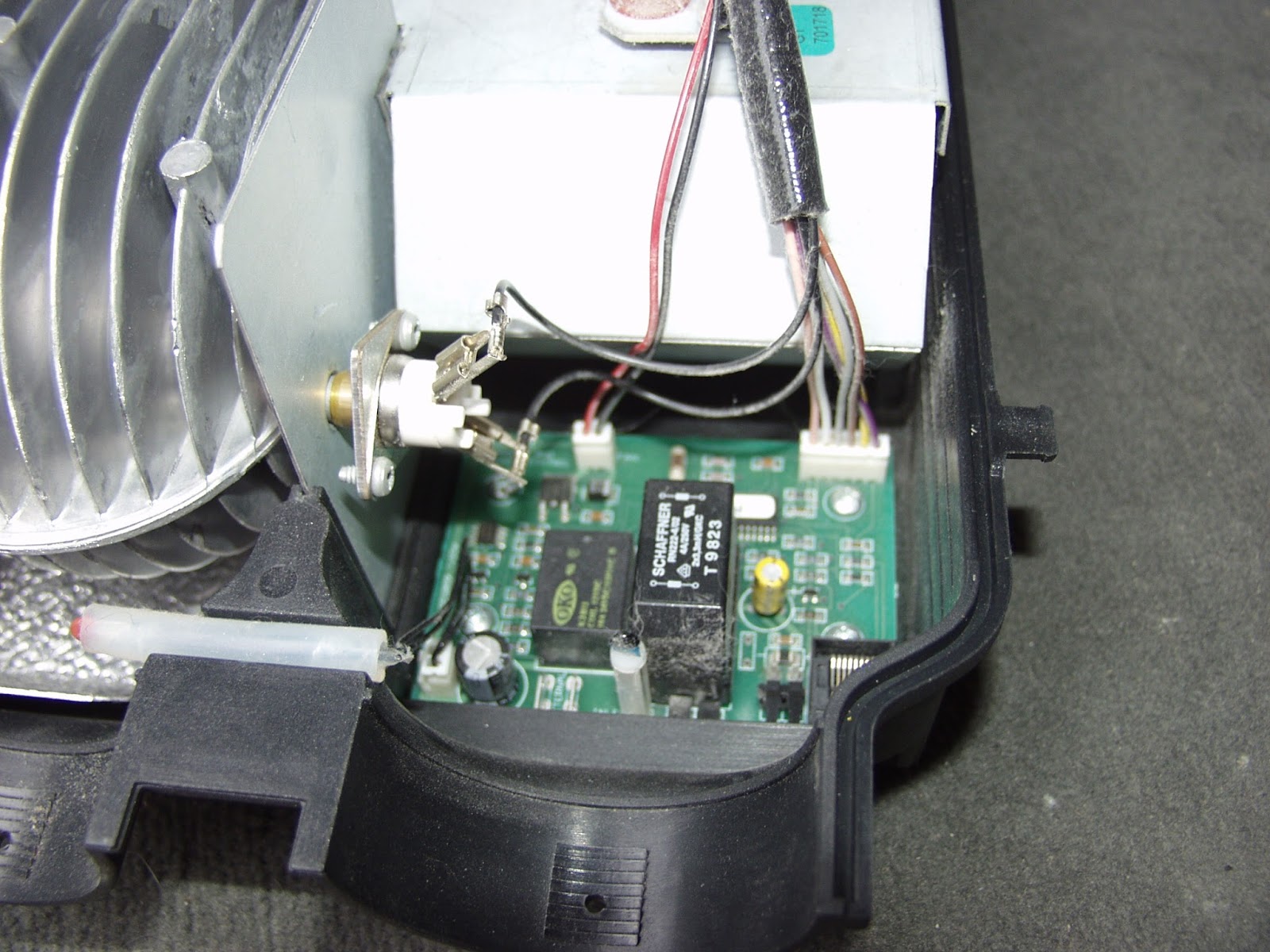I took these photos for documentation, for future service needs, as well as to better understand the design of the furnace. All the photos were taken on a Olympic first gen digital camera with built in 7x zoom.
Carver was acquired by Truma of German origin.
note the vibration isolators for the blower motor for quiet operation
there are two PCBs inside
bench testing with the top cover removed
note the metal (looks to be aluminized steel) heat shield under the heat exchanger; the top housing also has one so the enclosure of the furnace stays very cool during operation
from the wire harnest this board handles the comfort air circulation fan
note the locations of the thermistors for the warm air out and the return air; the MCU utilize the sensor at the warm air outlet to regulate the comfort air blower speed to the lowest possible in striving to maintain constant temperature
comfort air circulation fan - it only run as fast as the heat output requires at any moment during operation
the spark ignitor and solenoid gas valves - one for high and one for low (or 1 vs 2 both on) and one master
the stainless steel housing below the ignitor is the gas/air manifold
combustion air blower - it run ats two BTU levels in which the speed is governed by the MCU with a dynamic air flow feedback
combustion chamber
there are parts from different countries, including Japan and UK
the gas solenoid body was made by Teddington - a UK gas control products company
the burner manifold was made in UK
interesting that this microcontroller is marked as PC2 while the one on the small PCB is marked as PT2
the big chip is the microcontroller
the big black plastic part is the high voltage step up transformer for the spark ignitor; and the microcntroller is a Microchip PIC16C72
pic16c72 series uC
combustion air blower impeller (left) with the innovative (at the time) windmill photosensor (right); these are the key designs, in conjunction of the microcontrollers, making this furnace extremely quiet and electrically (low battery power consumption) efficient
fuel/air mixture manifold and spark ignitor
this board also contains a microcontroller - it serves as the rheostat interface, as well as contain a couple of relates; i gather the designer chose two microcontrollers for safety reasons; this secondary controller must perform monitoring of hazardous operation condition like overheating
the three solenoid gas valves - may be one is a master valve for dual layers of safety
the propane metering jet
combustion chamber with ignitor, gas and blower air ports
at the time of this design, DC motors with built-in tachometer was not common so this design utilize a windmill with optical sensor so the MCU can dynamically servo the combustion air supply
I cannot find a flame sensor in the combustion chamber, hence I concluded that the design utilizes one leg of the spark ignitor for this function using flame rectification method. This is the first of this kind that I encounter. Normally there is a third electrode for flame rectification sensing. Notice both electrodes are insulated from ground by the ceramic insulator. What is counter-intuitive is the spark is generated between the two electrodes. We all know thousand of volt is extremely hazardous to the flame sensing low voltage circuit. I infer the electrode with close potential to the ground must be the one that serves also for flame sensing using the burner manifold as ground reference. The other hint that supports flame rectification sensing is used is the MCU conducts ignition, and then flame trial all within a span of just about 1 second. It is always interesting to learn something new.
Here is one similar though different design.
note that both electrodes are insulated - one double duty as flame sensing
update 2015 dec:
Since there is no longer product support or service for this furnace in the US, I am posting all that are useful here. I found a case study about the furnace with some useful tidbits.
My installation and servicing of this furnace was not without a lot of challenge. Among them is the realization that the furnace was built for UK's higher propane pressure setting. Apparently few folks who imported European propane and butane appliances have committed the same mistake of selling these equipment without properly re-jetting them for the US propane system.
Very few of this furnaces were imported into the US. I recently managed to purchase a unit with a broken case for spare parts.
a following post carver p4 furnace for isolde - part 3















































Thanks for documenting this so thoroughly. It’s not every day you come across a personal story about furnace installation on a boat, and it was genuinely interesting to follow. I had no idea how much careful planning and adjustment were involved, especially in such a tight and unique space. The little challenges you faced along the way made it all the more real and relatable. It’s one thing to read a manual, but hearing how someone handles it step by step gives a much clearer picture. Appreciate you taking the time to share this experience.
ReplyDelete